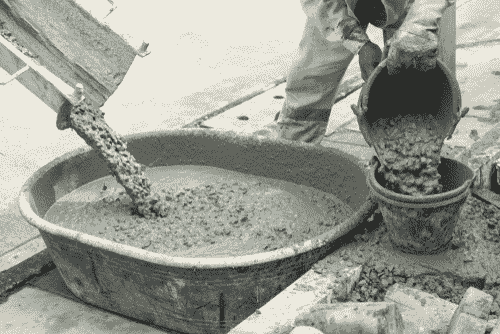Unveiling the Eco-Friendly Advantages of Utilizing Recycled Concrete in Lasting Construction Practices
In the world of sustainable building and construction techniques, the usage of recycled concrete stands as a crucial yet often undervalued source. Beyond its standard applications, recycled concrete offers a myriad of environmentally friendly advantages that extend far past the boundaries of standard construction products. From lowering environmental impact to enhancing cost-efficiency, the ramifications of integrating recycled concrete in sustainable building practices are considerable. This functional product not only addresses pressing environmental worries yet likewise provides a feasible solution to the challenges faced by the building sector at large.
Ecological Benefits
By including recycled concrete right into building and construction methods, there is a substantial decrease in the demand for brand-new raw materials, leading to preservation of all-natural resources. Furthermore, the usage of recycled concrete decreases the amount of waste being sent to garbage dumps, consequently minimizing environmental pollution and minimizing the stress on garbage dump capacities (Concrete).

Additionally, the production of standard concrete is a significant resource of carbon exhausts as a result of the energy-intensive process of cement production. In comparison, recycled concrete has a lower carbon footprint as it lowers the need for new concrete manufacturing. This decrease in carbon exhausts adds to mitigating environment change and supports sustainable building practices. Generally, the ecological advantages of using recycled concrete are substantial and play a crucial role in promoting environment-friendly building methods.
Cost-Efficiency
Accomplishing cost-efficiency is an extremely important factor to consider when evaluating the utilization of recycled concrete in building and construction jobs. One of the vital advantages of making use of recycled concrete is its cost-effectiveness compared to typical concrete.
Moreover, the use of recycled concrete can lead to savings in garbage dump prices by diverting concrete waste from disposal sites. This not just minimizes the ecological influence however likewise eliminates the costs connected with waste removal. The toughness and performance of recycled concrete are similar to traditional concrete, guaranteeing that price financial savings do not endanger the high quality of the building.
Resilience and Toughness
Considering the significant cost-efficiency advantages of using recycled concrete, it is essential to examine its sturdiness and toughness in building and construction applications. Recycled concrete deals similar, if not superior, resilience and stamina properties to standard concrete. pop over here Through innovations in handling techniques and quality assurance, recycled concrete can meet or exceed the performance requirements of standard concrete. The procedure of recycling concrete involves crushing, arranging, and screening old concrete to produce accumulations that can be made use of in brand-new construction tasks. These recycled aggregates are capable of providing sufficient compressive strength, longevity, and long-lasting performance.
:max_bytes(150000):strip_icc()/GettyImages-941748918-5c7f3654c9e77c00012f82f6.jpg)
Waste Decrease
Effective waste reduction practices play an essential duty in the lasting use of resources within the construction market. Waste decrease is an essential benefit that adds dramatically to ecological preservation when it comes to making use of recycled concrete. Standard building approaches frequently generate significant amounts of waste, specifically in the kind of concrete debris from demolition websites. By including recycled concrete right into construction projects, this waste is repurposed and drawn away from garbage dumps, lowering the overall ecological effect of building and construction activities.
Furthermore, the use of recycled concrete can lead to set you back savings for building tasks, as it is often much more economical than sourcing and transporting new products - Going Here Concrete. In conclusion, waste decrease through the utilization of recycled concrete is a vital component of sustainable building and construction practices that benefits both the building and construction and the setting sector as a whole.
Energy Conservation
When it comes to utilizing recycled concrete in construction, substantial power financial savings are attained contrasted to traditional concrete manufacturing. The process of generating recycled concrete involves reusing and squashing existing concrete products, which takes in less power than mining, handling, and transporting raw products for brand-new concrete production.
Conclusion
Finally, the utilization of recycled concrete in lasting building practices offers many environmental advantages, cost-efficiency, sturdiness, strength, waste decrease, and power conservation. By integrating recycled concrete into building and construction jobs, we can contribute to a much more sustainable and eco friendly future. It is essential for the building market to focus on using recycled materials to help in reducing the environmental impact of building and construction tasks.
One of the key benefits of making use of recycled concrete is its cost-effectiveness contrasted to typical concrete.Furthermore, the use of recycled concrete can lead to cost savings in landfill costs by diverting concrete waste from disposal sites. The sturdiness and efficiency of you can find out more recycled concrete are comparable to traditional concrete, making sure that price financial savings do not endanger the high quality of the building and construction.
